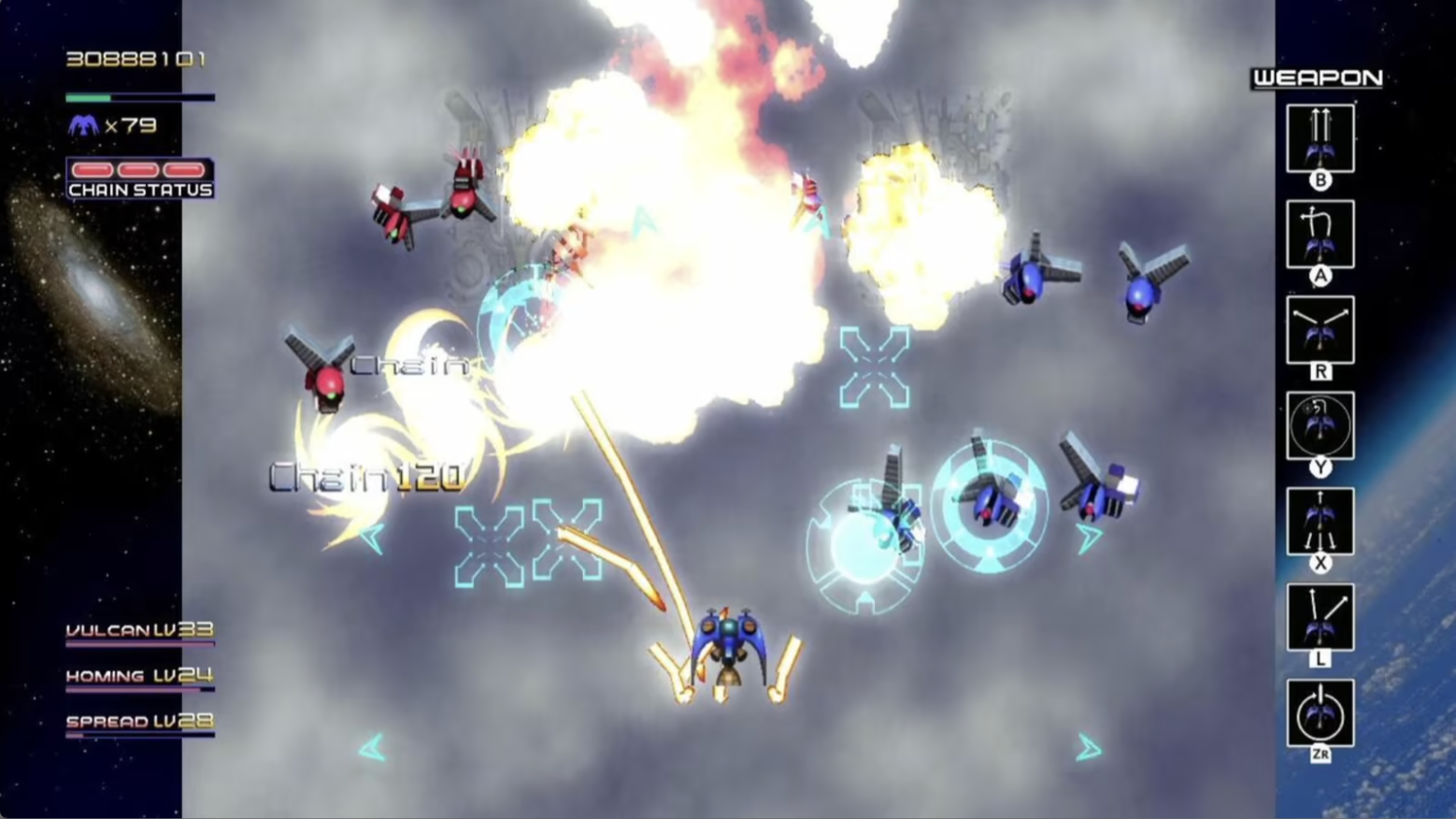

Proficiency could be getting all the way through stage 3 or beating the second mini-boss without getting hit or getting through the entire game on one credit. Radiant Silvergun, as released on Xbox Live Arcade in 2011, gleefully toys with the expectations of the gamer who thinks that shmups are short and predictable. There’s no immediate indication of whether you’re making measurable progress or why you’re on stage 3 or if all the stages are stage 3 or of whether Radiant Silvergun is some sort of existential experiment that comments on the genre’s inability to move beyond a predefined and familiar structure or of whether the near-parabolic spike in difficulty after the first two stages is going to continue into the end of the game. You play and you play again and you play again, and maybe you get to the third boss, and there’s confusion because the game keeps telling you that you’re playing pieces of the third stage, first 3A, then 3B, then 3C. There’s a tremendous learning curve here. Starting Radiant Silvergun on the “normal” difficulty level with three lives and three credits is something like starting Halo on Legendary difficulty with the added caveat that checkpoints only remain checkpoints for a limited time. This is partially because the state of “proficiency” is such a fungible concept. Perfection isn’t actually the goal, proficiency is, though it is admittedly true that “practice makes proficient” isn’t nearly as catchy.


It seems like the right thing to say, given that it’s usually said at the point where the listener’s ability is still in a malleable state, still prone to quick improvement over a short amount of time. “Practice makes perfect” is one of those little platitudes that you hear before you can even parse the words, and then continue to hear, over and over, every time that you try something new, even when the person saying it is utterly convinced that you will never actually be “perfect” given the current state of your ability. David Foster Wallace, “Federer as Religious Experience” That is, you won’t experience anything like the (empirically real) quickness and skill that the live audience, watching tennis balls move so fast they hiss and blur, will attribute to you. Your experience, in play, will not be that you possess phenomenal reflexes and speed rather, it will seem to you that the tennis ball is quite large and slow-moving, and that you always have plenty of time to hit it. Imagine that you’re a person with preternaturally good reflexes and coordination and speed, and that you’re playing high-level tennis.


 0 kommentar(er)
0 kommentar(er)
